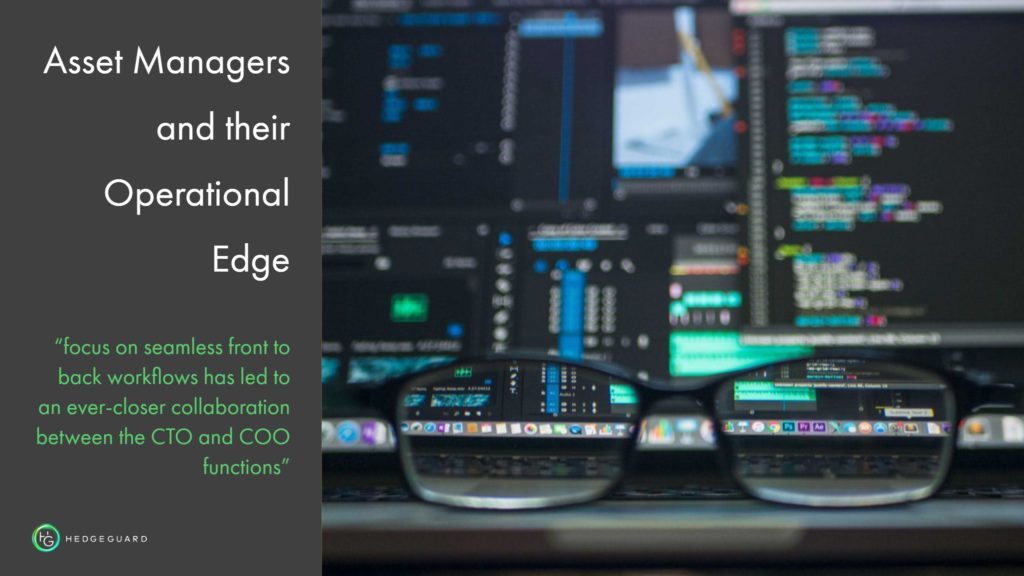Edge, the continuous focus of the portfolio manager, is now being identified and achieved in areas that span outside the traditional investment management remit.
This trend is also taking place in an increasingly challenging environment. Long-only managers for example are faced with heightened competition from low-cost passive and new systematic products and it has become crucial for managers to differentiate themselves and solidify their competitive advantage.
Portfolio managers are turning increasingly towards technology to gain an operational edge (an excellent report on this from PwC here). We have touched upon this focus point and the central role played by Portfolio Management Systems previously. Here we’ve broadened our scope somewhat and shared some of our recent interactions with asset managers. We notably take closer look at some of the key points COOs are focusing on today when considering the edge that can be derived from an operational standpoint.
Applying a Bespoke approach to Compliance
Undoubtedly one of the industry’s main themes, compliance has seen managers moving away from the one size fits all working towards complete customisation of their compliance framework. At the top of an asset manager’s priority list is robust investment guideline monitoring.
Challenges stem from the increasing complexity of investment products and the proliferation of data that require bespoke rules to be implemented, helping to monitor all active positions across multiple portfolios.
For example, automated passive monitoring processes, running on-going guideline monitoring on all post-trade active positions, have grown in importance. If a market event causes a compliant trade to become overexposed against the pre-set framework, an alert to rebalance the portfolio and resolve the breach can be implemented.
Managers have understood the importance of leveraging technology to equip themselves with the ability to seamlessly align compliance with core investment activities.
Streamlining the Workflow
On the subject of fluidity, the focus on seamless front to back workflows has led to an ever-closer collaboration between the CTO and COO functions. STP workflow is a key objective here, ensuring smoothness in the whole user experience. This covers several areas: from inputting trades/allocations, sending trades to the dealer, compliance checks, fills, the feedback loop from of executions from PBs to clearing/settlement platforms as well as admin and custodian functions.
Several years ago, we had the promise of the innovations that would be brought by cloud technology. Now that the cloud is fully in production we have seen the benefits and the increased fluidity between asset managers and their market counterparts. Similar disruptive innovation is currently taking place and allowing for both a closer alignment of Front/ Middle and Back office teams as well as higher levels of automation.
Precision
The IBOR, or Investment Book of Record, insures precision and accuracy of all data. Precise intraday positional information allows managers to gain a clear and singular view of their portfolio. The alignment of information ensures informed decisions are made. It is important to remember that an IBOR is separate from the middle office view.
Enhancing your team through technology
Cost reductions are a key consideration when evaluating outsourcing solutions. However, COOs have taken note of the impact technology can have on staff and performance. Indeed, by unlocking operational edge, technology has allowed employees to spend a larger portion of time focusing on high value tasks.
Find out more here, HedgeGuard’s intuitive technology and solutions are transforming an asset manager’s operational edge.

